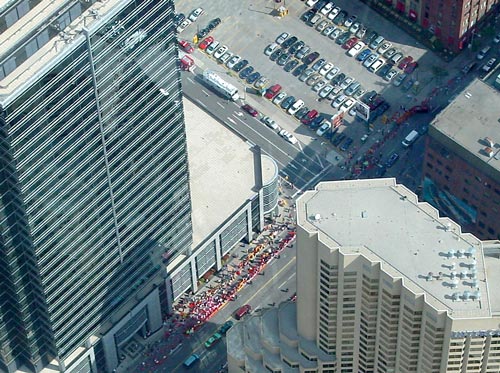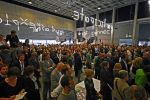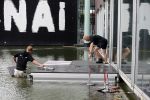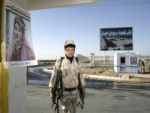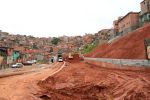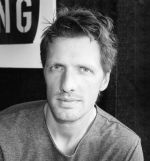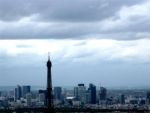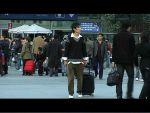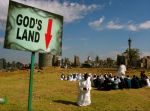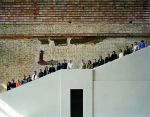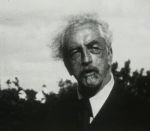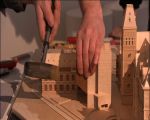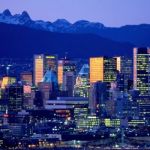Fr 20 Nov 09
Open Podium
A Lighthouse for Lampedusa
Every Friday afternoon during the Open City Event Program, a local "cultural ambassador" hosts a performance, presentation or discussion related to the theme of the week. This week, Lilet Breddels of VOLUME will present artist Thomas Kilpper and his project/competition for A Lighthouse for Lampedusa! Following a film and short lecture by Kilpper, a discussion with curator Marina Sorbello will explore the possible role of art and architecture in socio-political issues.
The Open Podium will follow the Refuge Diwan Conference from 10am – 4:30pm in the NAI Auditorium - More information
A Lighthouse for Lampedusa!
Almost every day there are news reports of refugees arriving at Europe’s southern shores. In 2008, about 30,000 refugees reached Europe via the Italian island of Lampedusa. Thousands drown in the sea—aid organizations estimate that one out of ten migrants die during this dangerous crossing. For the relatively small island of Lampedusa, with about 4,000 inhabitants, the endless stream of arriving migrants causes a lot of practical problems, bringing the administration to the brink of collapse. In 2008, the refugee center reached breaking point when up to 2,000 people were held in confinement under cramped conditions, in a space designed for a maximum of 700 people. Instead of helping Lampedusa to ease the situation on the ground and to relocate the migrants to the mainland like in the past, the Italian government further escalated the problem when it insisted that the detained migrants be kept on the island, and to erect a second detention- and deportation-center for them. In January 2009, the islanders went on a general strike against these plans, using the slogan: “No Alcatras in Lampedusa.” Participants expressed their desire to live on an open island: “To live from tourism and to welcome the poorest of the poor if they arrive...” (quotation of the Mayor of Lampedusa, 2009)
So far there is no end of the stream of refugees in sight. What can be done to prevent these tragic deaths? Efforts to improve and sustain living conditions in the immigrants’ country of origin would, if successful, last for decades, if not generations. Since 2007, the Berlin based artist Thomas Kilpper has pursued the idea of constructing a “Lighthouse for Lampedusa,” which is to have a double function: to provide essential orientation at sea and help to navigate refugee boats into safety, and to house a museum and cultural center, which the island still lacks. The Lighthouse is conceived as a tower and a landmark building, capable of hosting a diverse and trans-national program of communication, negotiation, exhibitions, concerts and other cultural events on its ground floor. It would serve as a place that attracts not only new visitors to the island but also local people—making Lampedusa not just a location to talk about, but also a place to learn from and listen to the ideas of others.
The refugee crisis of Lampedusa cannot be solved via military protection of the coastline or the declaration of a “state of emergency.” An international ideas competition will be launched in collaboration with the 4th International Architecture Biennale Rotterdam—“Open City: Designing Coexistence” — and Volume Magazine, calling for architects, planners, artists, and activists to develop imaginative architectural solutions for a lighthouse, museum and cultural center situated on the island. “Lighthouse for Lampedusa” calls for a humanitarian and fair immigration and integration policy in Europe based on the respect of a refugee’s human rights. Since Alexandria’s magnificent structure from 300 BC, lighthouses have been associated with welcoming strangers: Can 21st century Europe afford a different “wonder” of welcome—this time at its own shore?
Thomas Kilpper is a Berlin-based artist working with site related and politically charged issues (www.kilpper-projects.de).
Marina Sorbello is a curator, journalist and art-critic based in Berlin, Germany. She is currently involved in "Transient Spaces – The Tourist Syndrome" an interdisciplinary project on contemporary mobility, tourism and migration, encompassing research, theory, practice, workshops, seminars, conferences and art exhibitions in Italy, Lithuania, Romania and Germany in 2009 and 2010. "Transient Spaces – The Tourist Syndrome" is a project by uqbar, Berlin, initiated by Marina Sorbello and Antje Weitzel, in cooperation with Neue Gesellschaft für Bildende Kunst and Kunstraum Kreuzberg/Bethanien, Berlin; E-M Arts, Naples; ICCA/CIAC, Bucharest; Meno Parkas, Kaunas; funded with support from the European Commission and Foundation of German Lottery Berlin. www.transientspaces.org
Philipp Misselwitz is the curator of the REFUGE exhibition in the 4th IABR, “Open City: Designing Coexistence.” He is an architect, writer, and curator based in
Istanbul. He was educated at Cambridge University and the Architecture Association London and received a PhD in architecture and urbanism at Stuttgart University. He has been involved in numerous urban research and planning projects in Europe and the Middle East and works as an advisor to the UN and GTZ (German Technical Cooperation) on refugee camp issues.
+31 (0) 10 440 1342
Forum, NAI
5 pm
free admission
